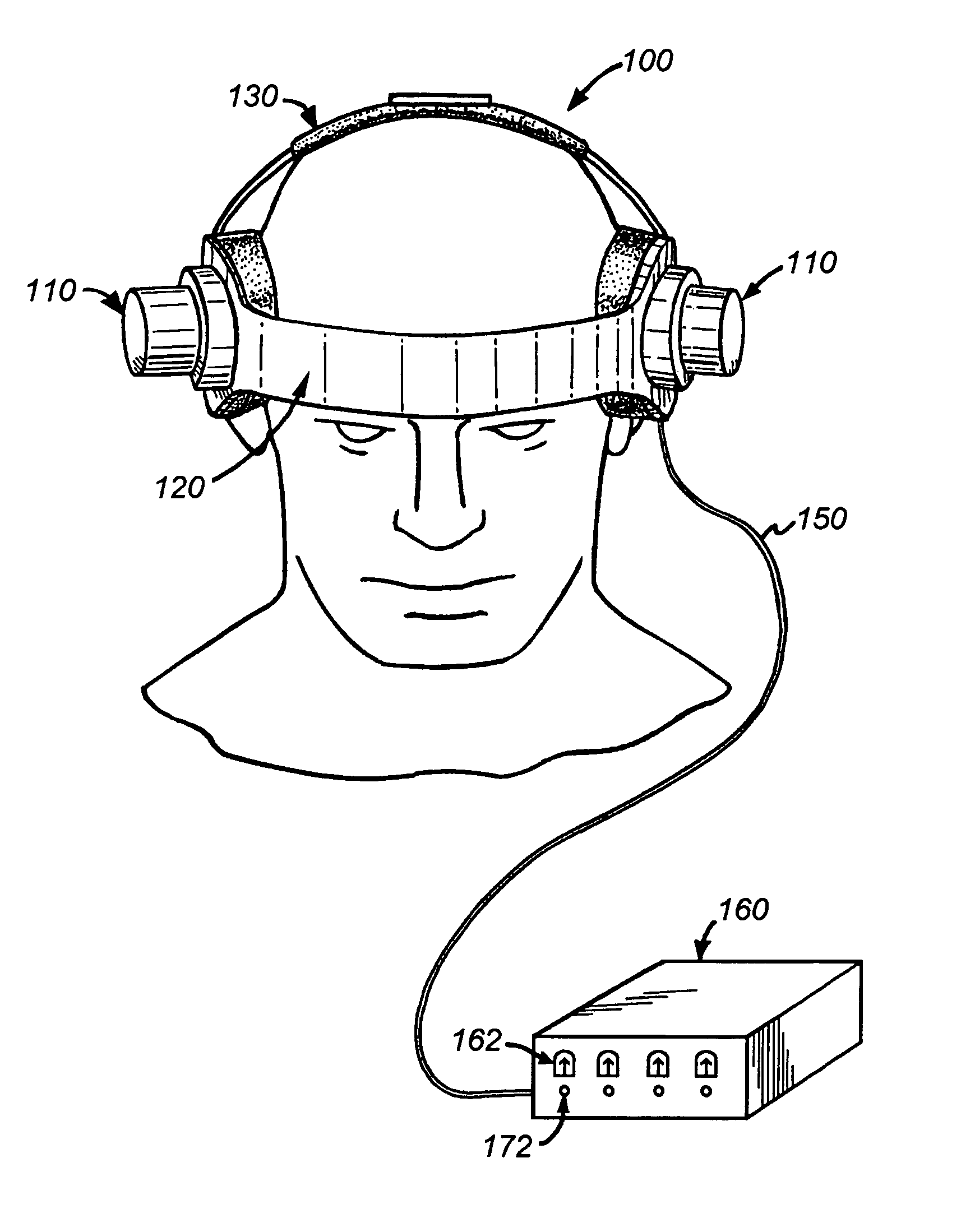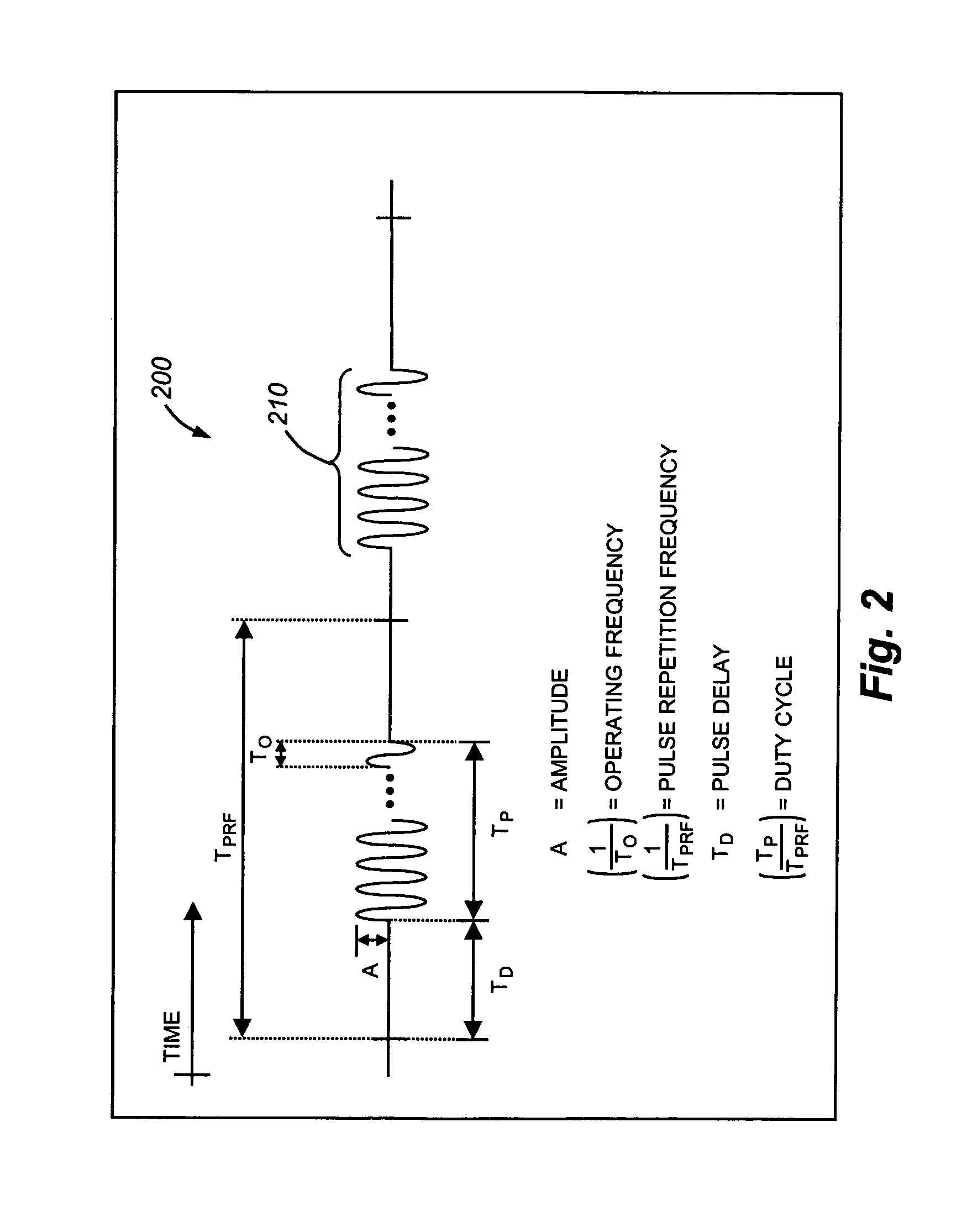Low intensity directed ultrasound (LODUS) mediated blood brain barrier disruption
a blood brain barrier and low intensity directed ultrasound technology, applied in physical therapy, chiropractic devices, therapy, etc., can solve the problems of diseased brain tissue not receiving the necessary amount of therapeutic agents to properly heal, bbb is one of the largest obstacles to treating many brain diseases, and the permeability through the bbb may be further limited, etc., to facilitate the delivery of therapeutic drugs, reduce intensities and frequencies, and increase the volume of bbb
- Summary
- Abstract
- Description
- Claims
- Application Information
AI Technical Summary
Benefits of technology
Problems solved by technology
Method used
Image
Examples
Embodiment Construction
[0042]FIG. 1 illustrates a headpiece 100 which may be used to apply low intensity directed ultrasound (“LODUS”) for disrupting the blood-brain barrier (“BBB”) in a controlled and reversible manner. The headpiece includes one or more LODUS transducers 110 which are strategically positioned along a circumferential band 120 adapted to fit securely around a patient's head, preferably encircling the head approximately at the level of the patient's temples. A top band 130 may be attached to the circumferential band 120 so as to span the diameter of the circumferential band. In this configuration, the top band 130 is seated atop of the patient's skull while the headpiece is worn, thereby preventing the headpiece from sliding vertically. It is expressly contemplated that the lengths of the bands 120 and 130 may be adjustable to accommodate heads of various shapes and sizes. Further, the bands may be constructed from various materials known in the art without limitation.
[0043]The LODUS trans...
PUM
 Login to View More
Login to View More Abstract
Description
Claims
Application Information
 Login to View More
Login to View More - R&D
- Intellectual Property
- Life Sciences
- Materials
- Tech Scout
- Unparalleled Data Quality
- Higher Quality Content
- 60% Fewer Hallucinations
Browse by: Latest US Patents, China's latest patents, Technical Efficacy Thesaurus, Application Domain, Technology Topic, Popular Technical Reports.
© 2025 PatSnap. All rights reserved.Legal|Privacy policy|Modern Slavery Act Transparency Statement|Sitemap|About US| Contact US: help@patsnap.com



